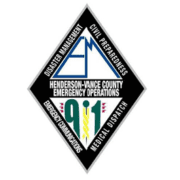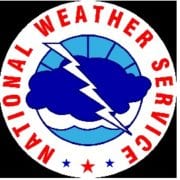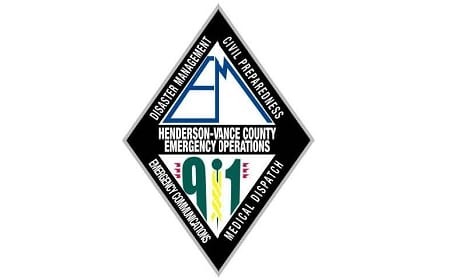— courtesy Henderson-Vance County Emergency Operations
“The 2017 Atlantic Hurricane Season is Underway. Are you prepared?”
The Atlantic hurricane season begins on June 1st of each year and ends on November 30th. The Vance County Office of Emergency Operations wants to make sure that you and your family are prepared for whatever this season brings our way.
Tropical cyclones are among nature’s most powerful and destructive phenomena. If you live in an area prone to tropical cyclones, you need to be prepared. Even areas well away from the coastline can be threatened by dangerous flooding, destructive winds and tornadoes from these storms. The National Hurricane Center issues watches, warnings, forecasts, and analyses of hazardous tropical weather.
The 2017 Atlantic hurricane season is forecast to be more active than historical averages with regard to the number of named storms, according to the latest forecasts released by Colorado State University, the National Oceanic Atmospheric Administration.
The Colorado State University (CSU) Tropical Meteorology Project outlook headed by Dr. Phil Klotzbach updated its forecast Thursday, calling for an above- average number of named storms with 14 expected. CSU forecasts an average number of hurricanes this year, with six expected in the Atlantic Basin. A below- average number of major hurricanes – two – is also anticipated.
The 30-year historical average (1981-2010) for the Atlantic Basin is 12 named storms, six hurricanes and three major hurricanes. A major hurricane is of Category 3 strength or higher on the Saffir-Simpson Hurricane Wind Scale.
NOAA issued its forecast at the end of May, 2017 and it called for:
- Eleven to 17 named storms – including April’s Tropical Storm Arlene.
- Five to nine of which would become hurricanes.
- Two to four of which would become major hurricanes.
The Atlantic Basin Seasonal Hurricane Forecast for 2017 is as follows:
Number of Named Storms: 11 – 17
Number of Hurricanes: 5 – 9
Number of Major Hurricanes (Category 3 or higher): 2 – 4
“The time to prepare is now, well out in front of peak hurricane season.” said Brian K. Short, Director of Emergency Operations for Vance County. Keep in mind that it only takes one storm to cause significant impact. Communities and individuals are expected to be self sufficient for a minimum of 72 hours (3 days) following the impact of a hurricane. “If the impact is severe enough, it may potentially take outside help that long to get here”, Short said. “By taking the time to gather up a few basic necessities now, you will enable your family to weather the storm and the aftermath until help can arrive.”
In the event that a storm should threaten our area, The Vance County Emergency Operations staff will get important out and information will keep the public informed of our preparedness activities. Like us on Facebook to stay up to date on severe weather and coordination activities.
Smart phone users can also download a free app from ReadyNC.org. This app provides a great deal of information regarding storm preparedness as well as current road conditions, local weather, power outages and storm shelters that are open just to name a few. Follow the link below to get this free app.
https://www.readync.org/EN/DOWNLOADAPP.html
For more information about how you and your family can prepare for severe weather including hurricanes visit our visit our website at:
https://www.vancecounty.org/departments/emergency-operations/
While you’re there, be sure to visit our community alert and notification section to sign up for CODE RED, our emergency alert system. NOTE: if you have a land line phone you are most likely already in the CODE RED system. Please add your cell phone if you would like to receive real time local alerts on your mobile phone or device.
Or visit Vance County Emergency Operations on Facebook
You can also call our office at 252-438-8264 for more information
2017 Tropical Storm Names for the Atlantic Region
Arlene Brett Cindy Don Emily Franklin Gert Harvey Irma Jose Katia Lee Maria Nate Ophelia Philippe Rina Sean Tammy Vince Whitney
Attached is a detailed list of general preparedness items that are recommended to have on hand going into hurricane season.
Recommended Family Preparedness Items
The best time to assemble a three-day emergency supplies kit is well before you will ever need it. Most people already have these items around the house and it is a matter of assembling them now before an evacuation or State of Emergency order is issued. Stocking up now on emergency supplies can add to your family’s safety and comfort during and after a disaster. Store enough supplies for at least three days, preferably seven days, in one place.
Start with an easy to carry, water tight container – a large plastic trash can will do, or line a sturdy cardboard box with a couple of trash bags. Next gather up the following items and place them in your kit:
Essentials
- Water – 1 gallon per person per day (a week’s supply of water is preferable)
- Water purification kit or bleach
- First aid kit and first aid book
- Pre-cooked, non-perishable foods, such as canned meats, granola bars, instant soup & cereals, etc.
- Baby supplies: formula, bottle, pacifier, soap, baby powder, clothing, blankets, baby wipes, disposable diapers, canned food and juices
- Non-electric can opener
- Anti-bacterial hand wipes or gel
- Blanket or sleeping bag per person
- Portable radio or portable TV and extra batteries
- Flashlight and extra batteries
- Essential medications
- Extra pair of eyeglasses
- Extra house and car keys
- Fire extinguisher – ABC-type
- Food, water, leash and carrier for pets
- Cash and change
- Seasonal change of clothing, including sturdy shoes
Sanitation Supplies
- Large plastic trash bags for waste, tarps and rain ponchos
- Large trash cans
- Bar soap, shampoo and liquid detergent
- Toothpaste and toothbrushes
- Feminine hygiene supplies
- Toilet paper
- Household bleach
- Rubber gloves
Don’t forget your pets when getting prepared!!!





